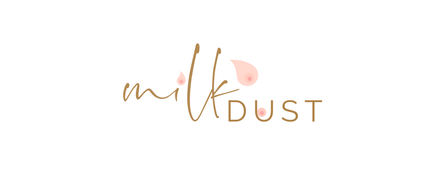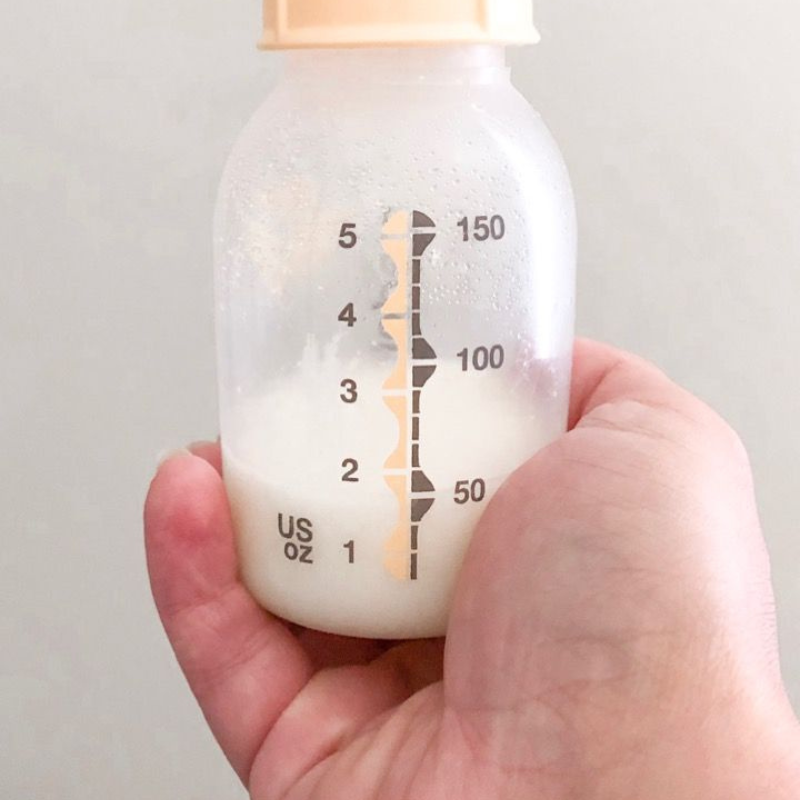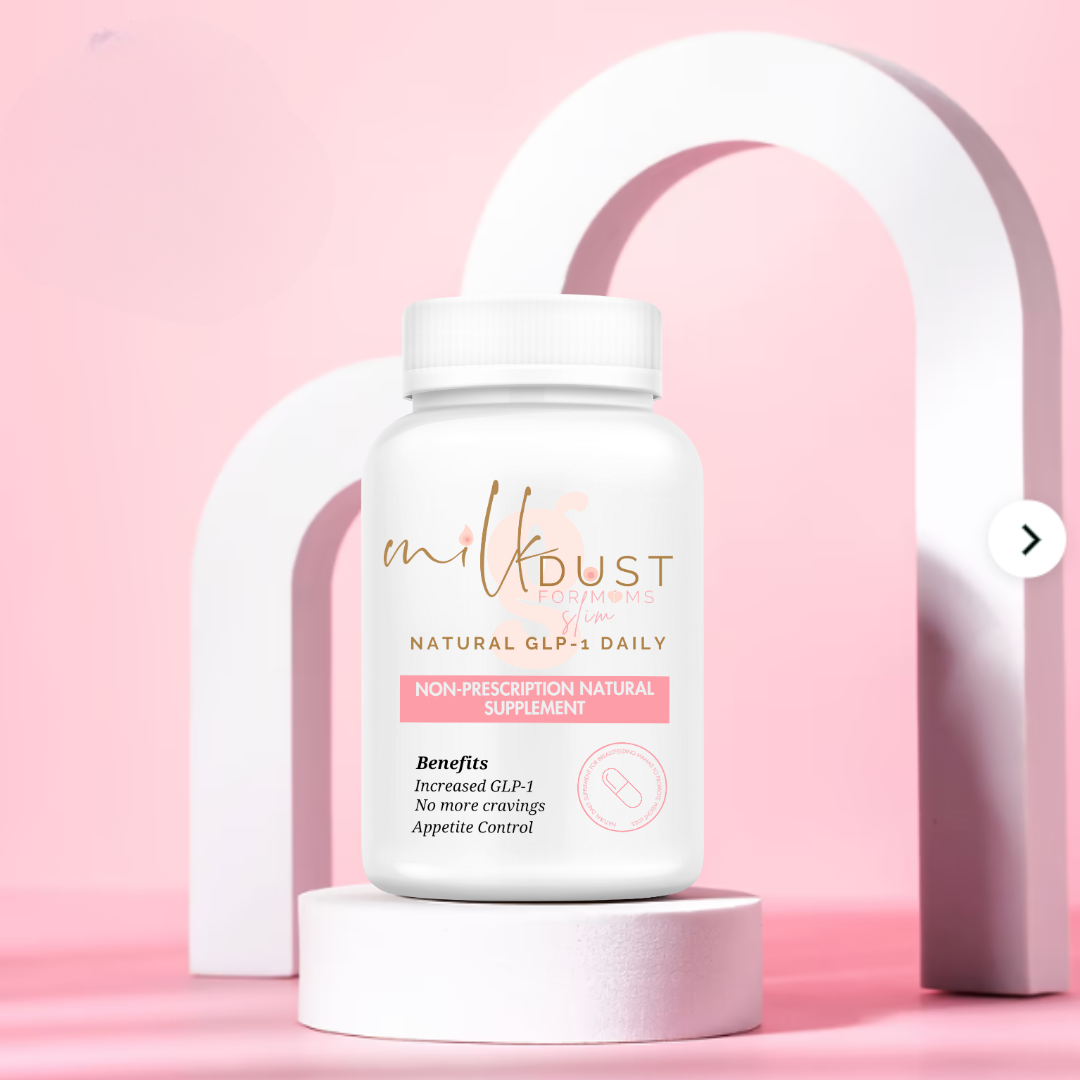As a mom of 4 boys, I've spent a lot of my years as a mother breastfeeding. I breastfed them all for about 2 years, so that's 8 years of breastfeeding under my belt. I know what it feels like to have a low milk supply, or to not really know if you are making enough milk for your baby. I think I asked myself if my milk supply was enough with every baby. We can't see how much they are actually drinking, and sometimes when they are fussy we assume they are probably hungry. I also found a lot of tricks and tips to increase my milk supply, and keep it up while losing the baby weight. I found nutrition to be my main focus during all of breastfeeding journeys because if I ate healthy, and nutrient-dense, my milk supply stayed stable and I was able to lose weight. If you struggle with milk supply, or you aren't sure if you really have a low milk supply, here are some tricks I used to help me know if my milk supply was really low or not. After looking at my tips to know if your milk supply is low, keep reading for my best tips to increase a low milk supply too!
My best tricks for knowing if you have a low milk supply:
Recognizing Signs of Low Milk Supply
If you are worried your breast milk supply might not be enough, I have some great tips and tricks that helped me figure out if I wasn't making much milk. Here are some things to keep in mind as you go through your breastfeeding journey.
First, consider the duration of feeding sessions; a notable decrease in time could suggest a reduced supply of milk. Additionally, observe your baby's behavior post-feed - a fussy or unsatisfied demeanor could indicate they're not receiving enough milk to meet their needs. Lastly, keep track of wet diapers; a decrease in their number might signal a lower breast milk production, pointing to the need for intervention to ensure your baby's well-being and growth.
Comparing Baby's Growth and Weight Gain
When I first became a new mom, I was obsessed with making sure my baby was getting enough breast milk. It felt like a constant battle, wondering if my breast milk supply was truly meeting my baby's needs. I learned quickly that comparing my baby's growth and weight gain was one of the best ways to gauge if they were getting enough milk. Your pediatrician will really help you know if your baby is growing and gaining weight as expected. In the early weeks you go more often just to make sure, and if baby loses a little bit of weight in the first week or two that's normal until your milk comes in. Every health care provider visit felt like a mini victory or a moment of truth, especially in those early weeks. With my first, I liked to track ounces, pumping and dirty diapers because I hadn't really developed my instincts yet. As you get going, you won't need to do much measuring because you will start learning baby's cries, the hungry ones or tired ones, so you'll know if baby is hungry or just needing comfort. This all comes with time and practice, and less stressing is better for your milk supply in general! Keeping baby skin close to you is always comforting, and it is the best way to keep your supply up and your hormones going. I kept my babies on me a lot, co sleeping and wearing them to make sure I kept their pheromones next to me!
Watch Feeding Patterns and Behavior
With my first, I thought I was supposed to feed baby on more of a schedule or a pattern. The first days are always a blurr of barely sleeping and lots of practicing a good latch, but as you get going, you start wondering if you need to have a feeding schedue. I found that just allowing baby to tell me if they were hungry was enough. The stress of a schedule, and trying to make baby wait for feeding time, or sleep at certain times was really difficult for me. Not having a schedule definintely led to more feeding for comfort and putting baby to sleep, but I believe that is what kept my milk supply so strong while losing weight. I did a lot of feeding in the early months, then switched to pumping and feeding later on. Building your milk supply with as much skin to skin feeding is essential.
I learned that changes in how your baby nurses can signal shifts in your milk supply. For instance, if you notice your baby engaging in cluster feeding, it might not be a cause for immediate concern. In fact, during growth spurts, babies often feed more frequently, and this is their ingenious way of boosting your breast milk production. However, constant signs of hunger could point towards your baby not getting enough milk. Observing your little one for cues like fussiness or anxiety around feeding times can offer insights. Initially, I found it challenging to interpret these behaviors, but with support from a lactation consultant and my healthcare provider, I understood how crucial it is to respond to my baby's needs, ensuring a full milk supply.
What Could Be Causing My Low Milk Supply?
Understanding exactly what is causing a low milk supply is really difficult. There are a lot of factors that go into how much breastmilk you are producing. In my experience, nutrient intake plays a huge role. If I didn't focus on eating clean, and eating nutrient-dense foods (with my Milk Dust shakes), my milk supply would drop. Yes, I could eat lactation cookies and those worked, but my weight also went up when I ate those. I noticed I was super tired if I ate a lot of lactation cookies, whereas when I ate super healthy, I had more energy and breast milk. Here are the main factors I found that cause a low milk supply:
- Medical conditions, such as thyroid issues or a retained placenta, can subtly undermine your breastmilk supply without any overt signs. This isn't common, but could be an issue if you experienced any of this.
- Nutrition, this is really important. If you look through the blog here at Milk Dust, you will find a lot of breastfeeding diet tips because your diet is really important. If you need help with exactly what to eat, this is a good blog post to read to help you know how to eat to increase your milk supply.
- Breastfeeding techniques, including how well the baby latches or the frequency of feeds, can greatly impact milk volume. I learned the hard way that a poor latch or not feeding often enough could signal my body to produce less milk.
Understanding these potential causes helped me take proactive steps towards boosting my supply—and reminded me I wasn't alone in this struggle.
My Best Tips To Boost Milk Supply:
There were many nights where baby was super fussy, and I was exhausted and sick of breastfeeding. I felt like I had given all the breast milk I had, and baby was still not satisfied. I later realized that sometimes babies just cry, they are tired, over tired, uncomfortable, or just needing a minute to cry. You don't have to correlate every cry and fussiness to hunger, but boy did I not know that in the beginning! Especially when I was tired, I was always wondering, was I producing enough milk? It felt like a daunting challenge, especially hearing the constant question, "How do I know if my milk supply is low?" Fortunately, with time and experience, I feel like I cracked the code on milk supply!
- Nurse frequently and on demand, ensuring the baby empties each breast to signal your body to produce more milk. When in doubt, just nurse some more! Baby will stop when they are full, and it is better tohave extra milk and extra feeding sessions, then not enough milk.
- Practice breast compressions during feeding to increase milk flow. Sometimes, you can help baby get more milk by pushing the milk out. This was also helpful for keeping clogs away. Any little clogs as you start producing more milk, can lead to mastitis, so if your breasts start feeling full and baby doesn't want to eat, you can squeeze milk out in the shower, and pump extra to make sure your milk doesn't go to waste!
- Eat a nutrient-dense diet including lactation-friendly foods like Milk Dust, green veggies, berries, nuts and complex carbs. As I pursued my nutrition certification I realized just how important nutrition is to balancing your blood sugar and hormones. It is paramount to your body being able to function, but many times moms jump to lactation cookies with lots of sugar and carbs, which can sometimes lead to a temporary increase in supply, but those don't target the root of a low milk supply which is usually a nutirent deficiency. Milk Dust offers essential nutrients that breastfeeding mothers need, so you don't have to force yourself to eat pounds of spinach and chicken. One scoop of delicious Milk Dust offers so much, and is so convenient for breastfeeding mothers.
- Speak with a lactation consultant if you notice persistently softer breasts, a significant drop in pumping output, or if your baby seems unsatisfied after most feeds.
It was through these steps I found not just a way to increase my supply, but also the confidence in my ability to nourish my baby.
What to Eat To Increase Milk Supply (bonus lose weight too!)
The hard reality is that new mothers often jump on the train of eating more to make more milk, but eating more doesn't always mean eating more nutrients. According to this outline by the University of Washington, describing care and nutrition for postpartum mothers,
"The increase in energy utilization increases needs for some nutrients (e.g., thiamin and niacin). Recommended intakes for other nutrients (e.g., copper, iodine, manganese, biotin, choline, riboflavin, and folate) are increased, based on the amount of the nutrient secreted in milk."
There are numerous vitamins and minerals that a new mom needs more of while breastfeeding. These increased nutrient needs are not satisfied with increasing calories alone, which is why I am such a huge proponent of eating nutrient-dense foods at every snack and meal.
I created Milk Dust as an delicious protein powder that fills all of these nutrient needs in breastfeeding mothers. Milk Dust not only fills the nutrient gaps, it also helps crush sugar cravings and increase milk supply! Milk Dust has a lactation blend that will boost your supply in addition to nourish your body, so low milk supply won't be an issue any more! There are no other safe protein formulas on the market that do all of this together.
When you use Milk Dust in your breastfeeding diet plan, you will be so happy to see how much milk you can produce!
"Milkdust saved my postpartum season!!! I saw ads and took a chance because I was desperate. I started working out consistently and eating very clean at 6 weeks postpartum (second kid) but I kept gaining weight instead of losing it! I was so discouraged and ready to try anything…so I bought milkdust protein powder and the metabolism boost. I started using it as a meal replacement because I wasn’t scared my supply would suffer and in one month I lost 5 pounds and the weight keeps coming off! My supply is great and I am so thankful I found milkdust. It will forever be in my postpartum essentials!"
Lindsey S.
Grab a free breastfeeding meal plan for milk supply!
Grab the free breastfeeding meal plan, so you can know exactly what to eat with recipes, that will increase your milk supply and help you lose weight! I also really want you to try Milk Dust! If anything, you need to try Milk Dust to see if it increases your milk supply! Milk Dust will help you increase your milk supply, and reduce sugar cravings without even having to follow a specific diet or meal plan.
THE MILK DUST LACTATION PROTEIN BLEND:
Organic Brown Rice Protein:
Brown rice has many benefits for breastfeeding, and it can actually help increase milk supply. According to Babyment, "It is healthy to eat brown rice while you are breastfeeding. First, It has hormone stimulants which boost lactation. That can help increase the secretion of breast milk. Second, brown rice contains chemical that can prevent postnatal depression." The brown rice protein can help you achieve your healthy milk supply, while also helping you get in the proper nutrition.
Organic Pumpkin Seed Protein:
Pumpkin seeds are particularly high in zinc, minerals and good fats that are an amazing superfood for lactation. Pumpkin seeds are also high in fiber and protein, which are a great way to feel full and nourished at the same time.
Organic Chia Seed Protein
Chia seeds are also high in healthy fats, which are important to the quality of your breast milk supply. By offering various seed proteins, there's a wide variety or minerals and healthy fats to increase the nutrient-density of the protein blend. The more nutrients the better for lactation. Chia seeds are iron-rich foods, believed to promote breast milk supply and are also good calcium sources and protein sources along with fats – all of which are essential for breastfeeding mothers.
Organic Flax Seed Protein:
This diverse blend of protein provides as much nutrients as possible, while also helping achieve the daily protein intake goal that is helpful for producing milk, feeling full and also losing the baby weight.
Also read: #1 RATED LACTATION PROTEIN POWDER FOR BREASTFEEDING MAMAS
MILK DUST IS CERTIFIED SAFE BY THE NATURAL AND NON-PRESCRIPTION HEALTH PRODUCT DIRECTORATE (NNHPD) OF HEALTH CANADA
In order to obtain an NPN, you must submit the exact amounts of every ingredients, certificates from those suppliers, and the Natural and Non-Prescription Health Product Directorate (NNHPD) of Health Canada reviews every single ingredient in the formula for safety, efficacy and overall quality.
Milk Dust achieved an NPN from the NNHPD and is determined safe, effective, and of high quality. This is a big deal, and verifies the safety of Milk Dust for consumption in the US. The US has much lower standards on products, where Canada strictly regulates any products in the health and wellness field. You can read more about the process, but it is strict and focused on only certifying products that are healthy and safe for consumers.
I hope to pursue more certifications for Milk Dust, to ensure the highest qualities to our customers, and I know I still drink Milk Dust as a nutritional supplement and protein powder 1.5 years after breastfeeding. It is an amazing product that gives your body so much, and you can trust that there's a mom just like you behind the formulation.










